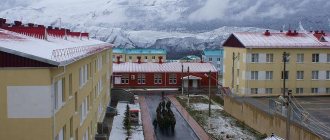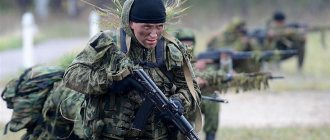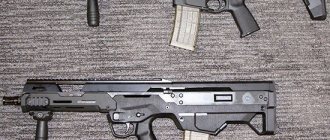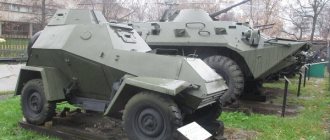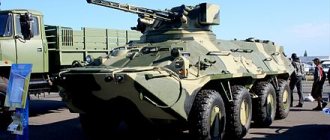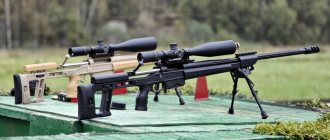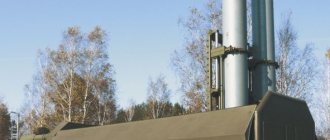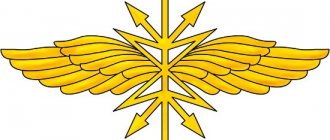The standard symbol for your platoon
in the NATO block and the US Armed Forces.
Bundeswehr platoon.
Platoon of the Bukhara Army, 1920.
A platoon of Soviet T-26 tanks at their starting position before the attack, 1939. Combat supply (ammunition) platoon of the 1901st self-propelled artillery regiment (1901 glanders), 1945.
A platoon in formation in a deployed two-rank formation (OKSVA).
Platoon
- a formation (unit) existing in the armed forces of most states. Organizationally, it is part of the company and battery. Individual platoons can also be included in independent states within military units, formations and institutions.
Depending on the functional purpose, there are platoons: motorized rifle (motorized infantry), infantry, parachute, tank, artillery, anti-tank, reconnaissance, communications, management, commandant, regulation, medical and sanitary, economic, supply, maintenance, etc.[ 1].
Branch
In the Soviet and Russian armies, a squad is the smallest military formation with a full-time commander. The squad is commanded by a junior sergeant or sergeant. Usually there are 9-13 people in a motorized rifle squad. In departments of other branches of the military, the number of personnel in the department ranges from 3 to 15 people. In some branches of the military the branch is called differently. In artillery there is a crew, in tank forces there is a crew. In some other armies, the squad is not the smallest formation. For example, in the US Army, the smallest formation is a group, and a squad consists of two groups. But basically, in most armies, the squad is the smallest formation. Typically, a squad is part of a platoon, but can exist outside of a platoon. For example, the reconnaissance diving section of an engineer battalion is not part of any of the battalion’s platoons, but is directly subordinate to the battalion chief of staff.
How to become a company commander
A career in military affairs is directly related to length of service, special merits, and advanced training.
In accordance with the above, military ranks are assigned, which open the way up the career ladder, allowing you to occupy a higher position in any structure.
Military rank reflects education, length of service, and merits received during service. In addition, the serviceman’s personal initiative will be taken into account during promotion.
To become a company commander, you need to be an officer. The officer not only manages the personnel, but is also responsible for the actions of the military personnel subordinate to him. The company commander acts on the basis of the Charter and other legal acts , such as regulations, instructions and orders. All personnel of the company, as well as private individuals seconded to it, are subordinate to him.
The demand for highly qualified career military personnel is high. If there is desire, good health and excellent service performance, the position of company commander will be the starting position for a future career in the Armed Forces of the Russian Federation.
Company
Several platoons make up a company. In addition, a company may also include several independent squads that are not included in any of the platoons. For example, a motorized rifle company has three motorized rifle platoons, a machine gun squad, and an anti-tank squad. Typically a company consists of 2-4 platoons, sometimes more platoons. A company is the smallest formation of tactical importance, that is, a formation capable of independently performing small tactical tasks on the battlefield. The company commander is a captain. On average, the size of a company can be from 70 to 200 people. Motorized rifle companies usually have about 101-150 people, tank companies 30-35 people. Usually a company is part of a battalion, but it is not uncommon for companies to exist as independent formations. In artillery, a formation of this type is called a battery; in cavalry, a squadron.
Support platoon for a tank (motorized rifle) battalion.
| Battalion support platoon |
| HF |
| Dining room |
| Bath and laundry disinfection point |
| Automotive (transport of ammunition) |
| Technical assistance |
| Evacuation |
| Automotive (delivery of fuels and lubricants, food, military-technical equipment) |
| Branches |
The main unit of logistics and technical support for a battalion (division) is the support platoon.
The battalion (division) support platoon is designed to store and transport ammunition, fuel and lubricants, military-technical, clothing and other property and provide them with units of the battalion (division), prepare hot food, maintain, evacuate and repair the battalion's (division's) weapons and military equipment. . Organizationally, a motorized rifle battalion support platoon consists of four sections (evacuation, technical assistance, automobile (supply of ammunition), automobile (supply of fuels and lubricants, food, clothing and military-technical equipment), canteen and bath-laundry disinfection point).
During combat operations, at the expense of the forces and means of the support platoon, the following are created: a technical observation point, a repair and evacuation group, a refueling point, an ammunition supply point, a bath and laundry disinfection point and a canteen (food point).
The evacuation department is equipped with an armored repair and recovery vehicle (tracked and wheeled in a tank and motorized rifle battalion, in support platoons of artillery battalions and special forces units only a wheeled one) and a light wheeled repair and recovery vehicle.
The technical assistance department is equipped with a technical service workshop.
The automobile department (for the supply of ammunition) is provided with trucks in a quantity that allows storing the transportable part of the unit's military stock of ammunition.
The automobile department (for the supply of fuels and lubricants, food, clothing and military-technical equipment) is equipped with tank trucks for storing and transporting fuel (AC), a fuel and oil tanker (ATMZ), and trucks for the delivery of food, clothing and military-technical equipment.
The dining area is provided with mobile kitchens, water tanks and a food storage trailer.
The bath and laundry disinfection station is equipped with a degassing and shower unit.
III ELEMENTS OF TECHNICAL SUPPORT CREATED IN BATTLE. MANAGEMENT OF TECHNICAL SUPPORT DURING THE BATTLE (MARCH)
Management of tank technical support during a battle (march). The battalion's tank and technical support in battle is controlled from the command observation post and from the technical observation point (PTN).
The position of the deputy battalion commander for weapons is determined by the battalion commander based on the conditions of the situation. As a rule, the deputy battalion commander for armaments in combat heads the work of the battalion's combat forces, and in some cases may also be at the command and observation post.
Deputy company commanders for armaments during battle are, as a rule, located at the battalion's command post. If a company PTN is organized, then it is headed by the deputy company commander for weapons.
The technical supervision point is the initial link in the overall technical support management system. The main tasks of the PTN are:
— monitoring the weapons and equipment of one’s own and assigned units on the battlefield;
— finding and mapping the location of out of order weapons and equipment;
— determination of the levels of contamination of the area and failed weapons and equipment;
— finding out the condition of the crews (crews, drivers), providing them with medical assistance if necessary;
— establishing the reasons and nature of the failure of weapons and equipment, the volume of restoration work and the need for forces and means to carry them out;
— finding the nearest shelters for carrying out repair work, places convenient for placing and deploying repair units, as well as paths (routes) convenient for evacuation vehicles to approach damaged (stuck) vehicles.
The PTN usually includes deputy company commanders for weapons, repairmen from battalion maintenance and repair units, and, if necessary, dosimetrist chemists, sappers and orderlies.
For PTN work, by order of the battalion commander, armored all-terrain vehicles with communications equipment and night vision devices are usually allocated.
Management of the tank technical support of a battalion in battle is organized in accordance with the decision of the commander via the technical support radio network.
The technical support radio network must ensure the transmission of direct and reverse information from the deputy battalion commander for weapons up (to the battalion commander, deputy regiment commander for weapons, the technical part of the regiment) and down (to subordinate and assigned forces and technical support facilities). Based on this, the radio network of the battalion's technical support includes radio equipment allocated to the deputy battalion commander for weapons to ensure communication: with the battalion command and observation post; with the deputy regiment commander for weapons and the technical part of the regiment; with the forces and means of technical support of the senior commander, performing their tasks in the battalion’s zone of operations. In addition, this radio network includes radio stations of damaged (faulty) and stuck vehicles, REG (RemG) of the battalion, PTN of the company, if they are created according to the conditions of the situation, as well as radio stations of forces and technical support equipment assigned to the battalion for the period of performing assigned combat missions . For the technical support radio network, call signs of officials, control and warning signals, main and reserve frequencies are established. An approximate organization of a battalion's technical support radio network is shown in Fig. 18.
To control tank technical support in the battalion, in addition to radio equipment, wired, mobile, signal and other communication means are used.
Wired communications in a battalion are typically used in field and defensive situations.
Mobile communications equipment is used to transmit orders and reports in all types of combat, as well as on the march and when stationed on the spot.
Signal communications are used to transmit visual, sound and light warning, control and interaction signals.
The deputy battalion commander for armaments receives information about the condition of disabled vehicles from the personnel who are part of the PTN and monitor the vehicles on the battlefield, from reports of crews (crews, drivers) via the battalion technical support radio network, as well as from reports of deputy commanders weapons companies sent from the PTN to stopped vehicles if there is no radio contact with them. Personal observation and constant listening to radio communications conducted on the battalion commander’s network allows the deputy battalion commander for weapons to always be aware of changes in the tactical situation, to know the commander’s decisions regarding it and the tasks that he assigns to the units.
Having received the necessary information on the current tactical and technical situation, the deputy battalion commander for weapons quickly understands and evaluates it, makes a decision on restoring failed vehicles with his own forces and means or transferring them to the means of the senior commander and assigns tasks to the head of the REG (RemG) of the battalion.
He reports to the battalion commander and deputy regiment commander for armaments in accordance with the established procedure about all failed vehicles, the nature of the damage (jams), and the decision made to restore or transfer them.
The location of damaged vehicles, indicating their types and numbers, the nature of the damage, the time of failure and the decision made regarding these machines (repair or evacuation by one’s own means, transfer to the funds of a senior superior, write-off), actual locations of maintenance, places of refueling with fuel and lubricants , places and times of replenishment of ammunition, data on changes in the radiation and chemical situation, blockages and destruction in the battalion's operational zone, where vehicles may get stuck, and other data are plotted on the working map.
The main requirement for a work map is its clarity and reliability. The working hag is carried out with colored pencils, carefully, in compliance with the requirements of the instructions and regulations.
The battalion's PTN keeps a log of out-of-service weapons and equipment, which reflects more detailed information about the location, nature of the damage, the scope of preparatory work and work on the repair and evacuation of damaged and stuck vehicles. This journal can be kept on pre-prepared forms or on the back of a work card in the form of a table.
The frequency and direction of P'GN movement depend on the current situation and instructions from the head of the technical observation point. As a rule, the PTN moves behind the battle formations of its unit from cover to cover in such a way that as many combat vehicles as possible are in its observation zone.
Data on the tank technical support situation accumulated at the PTN during the day of the battle, 9 as well as information received from deputy company commanders for armaments and the head of the REG (RemG) battalion; the deputy battalion commander for armaments reports to the deputy regiment commander for armaments or to the technical part of the regiment. Having received instructions from them, the deputy battalion commander for weapons organizes further work on tank technical support.
Thus, the head of the PTN during the battle performs the following tasks:
- maintains constant contact with the commander of his unit and the deputy commander of the regiment (battalion) for weapons;
- reports on the location and condition of disabled weapons and equipment, the condition of crews (crews) or drivers (drivers), on measures taken to restore weapons and equipment with their own and assigned forces and means;
— maintains a work card and a log of out-of-service weapons and equipment.
Along with the performance of these duties, the head of the PTN constantly supervises his own and assigned evacuation and repair forces and means.
Composition and tasks of repair and evacuation groups. To provide technical assistance to vehicles that have failed during the battle, their ongoing repair on the spot or evacuation to the nearest shelter, repair groups and repair and evacuation troupes (REG) are organized from the battalion maintenance units and the regiment's repair company. The composition usually includes one or two mobile tank repair shops (maintenance vehicles) and a vehicle with armored equipment, fuel and lubricants, and the REG also includes tank tractors or BREM-1. RemG and REG are provided with night vision devices.
The work of the battalion REG (RemG) is led by the deputy battalion commander for weapons.
The evacuation and repair of weapons and equipment during the battle is carried out by means of the battalion's REG, which is located behind the first echelon. First of all, equipment is evacuated from under enemy fire and from threatened areas where enemy penetration is possible. Damaged equipment that has serviceable weapons and is capable of combat remains in combat order and is evacuated only with the permission of the battalion commander.
The evacuation of damaged tanks within the battalion's defense area is carried out by attached tractors, and at the brigade's SPPM - by brigade evacuation vehicles.
During the battle, the battalion's Remg (REG) carries out repair work that restores the combat capability of the vehicles and ensures their mobility, as well as preparatory work for the evacuation of the vehicles to shelters or to the brigade's special forces.
A collection point for damaged vehicles (CPM) is organized by order of the deputy regiment commander for weapons in the areas of the largest concentration of disabled vehicles. The commander of the regiment's repair company is appointed as the head of the SPPM.
At SPPM the following is carried out:
— control of contamination of vehicles with radioactive and toxic substances and, if necessary, their decontamination (degassing);
— inspection of machines and determination of the scope of their repairs;
- repair of vehicles that, due to time and opportunity, can be repaired by the RR regiment;
- transfer to repair units or evacuation to the units of the senior service commander of damaged vehicles that cannot be repaired by the forces and means of his unit.
Composition and tasks of closing the battalion.
Tasks:
— to establish the reasons for machine stops;
— providing assistance to crews in the maintenance and repair of vehicles and providing them with spare parts necessary to troubleshoot problems;
- evacuation from traffic routes of easily stuck and faulty vehicles that interfere with the movement of the column in the battalion, a technical closure is organized.
Composition: the closure of the battalion includes the battalion's military technical equipment and 1-2 ATMZ. If necessary, it is reinforced by means of the unit’s repair company.
The rear follows at the tail of the battalion's marching column and is headed by the deputy battalion commander for weapons.
Military and other equipment that fails during the march stops on the right side of the road or is evacuated to the side. The deputy company (battalion) commander for weapons, following behind the scenes, when a vehicle fails, assesses the volume and nature of repair work and makes a decision.
If the crew is able to eliminate the malfunction, they are given spare parts and instructed on how to perform the work. If necessary, one or more specialists from the battalion's rear are left for repairs. The duration of repair of vehicles by closing on the route should not exceed the time before the arrival of the column of the next battalion.
Having given the necessary orders along the route, the deputy battalion commander for weapons, together with. the battalion arrives in the day (night) rest area and organizes the preparation of weapons and equipment for the next transition or battle. Military equipment that cannot be restored by closure is transferred to the regiment's repair facilities on the route, and if evacuation facilities are available as part of the washout, it is evacuated from the route to shelters. On damaged vehicles that are not repaired along the route, the faults are first eliminated, allowing them to move under their own power, or they are towed by the battalion's means to the concentration area, where they are repaired or transferred for repair by the regiment's means. Cars that were left behind on the way, after repairs, continue to move, aligning themselves with the passing column.
In cases where the enemy launched a nuclear attack on the column, the battalion continues to carry out the task, the closure follows the battalion. Repair of damaged vehicles is carried out in the area using the repair facilities of the regiment or division.
If there are gorges, crossings and other difficult-to-pass sections on the route, repair and evacuation groups from the regiment's repair company are sent to these places in advance, usually with the OOD.
Collection points for damaged vehicles are planned in areas of large stops and rest. If necessary, SPPM can be organized in areas of mass machine failure. The SPPM is deployed by the forces and means of the regiment's repair company.
The deputy company (battalion) commander reports to his senior commander about vehicles that are behind on the way and at the same time reports on the technical condition and availability of equipment and weapons.
CONCLUSION
The readiness of formations and units to carry out combat missions, advance over long distances in various ways in readiness to conduct combat operations in various directions, both in local wars and armed conflicts, and when performing tasks in peacekeeping operations, are the main tasks of the Armed Forces of the Russian Federation. In modern conditions, the country's military leadership pays special attention to the training of formations, units and subunits that are part of the Armed Forces of the Russian Federation.
To successfully solve these problems, troops must have a reliable command and control system, units and formations must be equipped with military equipment, the development of the high technical capabilities of which must be served by an effective system of technical support for units, a system for maintaining vehicles in constant combat readiness for use for their intended purpose in various situations.
Ensuring high combat readiness of weapons and military equipment, their trouble-free and trouble-free operation is possible only with the correct organization of the operation of vehicles in various conditions and situations, taking into account the experience of combat operations of troops in wars and armed conflicts.
The main responsibilities for organizing the correct operation of weapons and military equipment are assigned to commanders of units (formations), their deputies for armaments and heads of services. Starting from the receipt of vehicles from central bases, industrial plants or overhaul plants, unit (formation) commanders are required to organize:
— commissioning of weapons and military equipment facilities;
— bringing them to the established degree of readiness for use and maintaining it for a specified time;
— intended use;
- storage;
— transportation.
If necessary, at the final stage of operation of weapons and military equipment, the unit commander supervises the cessation of operation of the vehicles and their decommissioning.
To successfully solve such problems, it is necessary to demonstrate comprehensive creative activity of the ZKV battalions (companies) in tank technical support.
LITERATURE
Main:
— Combat Regulations for the preparation and conduct of combined arms combat, part 2, M. Voenizdat 2004.
— Textbook “tank technical support”, M. Voenizdat 1989.
Additional:
— Textbook for sergeants of maintenance and repair units, Moscow 2008.
Author:
Battalion
Consists of several companies (usually 2-4) and several platoons that are not part of any of the companies. The battalion is one of the main tactical formations. A battalion, like a company, platoon, or squad, is named after its branch of service (tank, motorized rifle, engineer, communications). But the battalion already includes formations of other types of weapons. For example, in a motorized rifle battalion, in addition to motorized rifle companies, there is a mortar battery, a logistics platoon, and a communications platoon. The battalion commander is a major or lieutenant colonel. The battalion already has its own headquarters. Usually, on average, a battalion, depending on the type of troops, can number from 250 to 950 people. However, there are battalions of about 150 people. In artillery, this type of formation is called a division.
- Note1 : The name of the formation - squad, platoon, company, etc. depends not on the number of personnel, but on the type of troops and the tactical tasks assigned to the formation of this type. Hence the dispersion in the number of personnel in formations that have the same name.
Historical changes
The first changes in the official order began to occur from the time of Ivan the Terrible.
Further, Mikhail Fedorovich continued to modernize the system. However, even the Streltsy hundreds of that time still had a rather archaic structure. And the list of military ranks was not much different from the old one. However, the system became more and more recognizable. And it allows us to draw certain parallels with the modern version:
- Foreman - sergeant;
- Pentecostal – Lieutenant;
- The centurion is the captain.
Further transformation took place under Peter the Great, who, as you know, did a lot for the country’s army and navy. It was during his reign that the rank of corporal appeared, which corresponds to the modern ensign. A lieutenant, a captain and a quartermaster also appeared, who correspond to the captain and major.
In 1654, the first general appeared in Russia. Before this period, such a title did not exist.
A. W. Leslie is the first person to receive this title. It was provided to him after the liberation of Smolensk.
It was he who led this operation, and was able to carry it out with brilliant success.
Regiment
In the Soviet and Russian armies, this is the main (one might say key) tactical formation and a completely autonomous formation in the economic sense. The regiment is commanded by a colonel. Although regiments are named according to the types of troops (tank, motorized rifle, communications, pontoon-bridge, etc.), in fact this is a formation consisting of units of many types of troops, and the name is given according to the predominant type of troops. For example, in a motorized rifle regiment there are two or three motorized rifle battalions, one tank battalion, one artillery battalion (read battalion), one anti-aircraft missile battalion, a reconnaissance company, an engineer company, a communications company, an anti-tank battery, a chemical defense platoon, a repair company, logistics company, orchestra, medical center. The number of personnel in the regiment ranges from 900 to 2000 people.
Brigade
Just like a regiment, it is the main tactical formation. Actually, the brigade occupies an intermediate position between a regiment and a division. The structure of a brigade is most often the same as a regiment, but there are significantly more battalions and other units in a brigade. So in a motorized rifle brigade there are one and a half to two times more motorized rifle and tank battalions than in a regiment. A brigade can also consist of two regiments, plus battalions and auxiliary companies. On average, the brigade has from 2 to 8 thousand people. The brigade commander, as well as the regiment, is a colonel.
Division
The main operational-tactical formation. Just like a regiment, it is named after the predominant branch of troops in it. However, the predominance of one or another type of troops is much less than in the regiment. A motorized rifle division and a tank division are identical in structure, with the only difference being that in a motorized rifle division there are two or three motorized rifle regiments and one tank, and in a tank division, on the contrary, there are two or three tank regiments and one motorized rifle. In addition to these main regiments, the division has one or two artillery regiments, one anti-aircraft missile regiment, a rocket battalion, a missile battalion, a helicopter squadron, an engineer battalion, a communications battalion, an automobile battalion, a reconnaissance battalion, an electronic warfare battalion, and a logistics battalion. a repair and restoration battalion, a medical battalion, a chemical defense company, and several different support companies and platoons. In the modern Russian Army, there are or may be divisions of tank, motorized rifle, artillery, airborne, missile and aviation divisions. In other branches of the military, as a rule, the highest formation is a regiment or brigade. On average, there are 12-24 thousand people in a division. Division commander, Major General.
Formations of the RF MFA
DBK "Bal" of the 25th separate coastal missile regiment of the Baltic Fleet.
2A65 "Msta-B" of the 120th Guards Artillery Brigade at the Chebarkul training ground.
Launch of a cruise missile from the Iskander-M launcher of the 26th Missile Brigade during the active phase of the Zapad-2017 exercise.
The list shows brigades and regiments of the Missile Forces and Artillery of the Ground and Coastal Forces of the Russian Federation.
Self-propelled gun 2S3 of the 40th separate marine brigade.
MLRS "Grad" of the 147th Guards Self-Propelled Artillery Regiment of the 2nd Guards Motorized Rifle Division.
Msta-S of the 205th separate motorized rifle brigade. Artillery regiments of divisions
- 50th Guards Self-Propelled Artillery Regiment (Shali village)
- 99th Guards Self-Propelled Artillery Pomeranian Red Banner, Orders of Suvorov and Kutuzov Regiment, military unit 91727 (Boguchar)
- 147th Guards Self-Propelled Artillery Simferopol Red Banner Order of Suvorov, Kutuzov and Alexander Nevsky Regiment, military unit 73966 (Kalininets village)
- 381st Guards Self-propelled Artillery Carpathian Order of Bohdan Khmelnitsky Regiment, military unit 24390 (Persianovsky settlement)
- 856th Guards Self-Propelled Artillery Kobrin Red Banner, Order of Bogdan Khmelnitsky Regiment, military unit 23857 (Pochep)
- 1065th Guards Red Banner Artillery Regiment, military unit 62297 (Kostroma)
- 1140th Guards Artillery Twice Red Banner Regiment, military unit 45377 (Pskov)
- 1141st Guards Artillery Regiment, military unit 40515 (Anapa)
- 1182nd Guards Artillery Novgorod Red Banner Orders of Suvorov, Kutuzov, Bogdan Khmelnitsky and Alexander Nevsky Regiment, military unit 93723 (Naro-Fominsk)
- 140th Artillery Regiment, military unit 5382 (Naurskaya station)
- 400th Self-Propelled Artillery Transylvanian Red Banner Order of Bohdan Khmelnitsky Regiment, military unit 15871 (Chebarkul)
- 275th self-propelled artillery Tarnopol Red Banner Order of Suvorov and Kutuzov Regiment, military unit 73941 (Naro-Fominsk)
- 998th Artillery Starokonstantinovsky Red Banner, Orders of Suvorov and Bogdan Khmelnitsky Regiment (Dushanbe)
Artillery brigades and regiments of corps and army subordination
- 9th Guards Artillery Kielce-Berlin Orders of Kutuzov, Bohdan Khmelnitsky, Alexander Nevsky and Red Star Brigade, military unit 02561 (Luga)
- 120th Guards Artillery Stalingrad Red Banner, Order of Suvorov Brigade, military unit 59361 (Yurga and Chistye Klyuchi village)
- 244th Guards Artillery Vitebsk Red Banner, Orders of Kutuzov and Alexander Nevsky Brigade, military unit 41603 (Kaliningrad)
- 268th Guards Artillery Brigade (Pushkin)
- 385th Guards Artillery Odessa Red Banner, Order of Bogdan Khmelnitsky Brigade, military unit 32755 (Totskoe village)
- 30th Artillery Brigade (Ulan-Ude)
- 165th Prague Red Banner Artillery, Orders of Kutuzov and Bogdan Khmelnitsky Brigade, military unit 02901 (Nikolskoye village)
- 200th Artillery Brigade, military unit 48271 (Gorny village)
- 227th Artillery Tallinn Red Banner, Order of Suvorov Brigade, military unit 21797 (Krasnooktyabrsky village)
- 236th Artillery Poznan Order of Bohdan Khmelnitsky Brigade (Kolomna)
- 288th Artillery Warsaw-Brandenburg Red Banner, Orders of Kutuzov, Bogdan Khmelnitsky and Red Star Brigade, military unit 30683 (Mulino village)
- 291st Artillery Order of Suvorov Brigade, military unit 64670 (Troitskaya station)
- 305th Artillery Gumbinnen Order of the Red Star Brigade, military unit 39255 (Ussuriysk / Pokrovka village)
- 8th separate artillery regiment, military unit 87714 (Simferopol and Perevalnoe village)
- 950th Rocket Artillery Regiment, military unit 92190 (Totskoye-2)
- 943rd Rocket Artillery Regiment (Krasnooktyabrsky village, Republic of Adygea)
- 312th separate jet division (Dachnoe settlement, Sakhalin region)
- 2nd separate jet division (Kurgan-Tube)
Artillery brigades of district subordination
- 45th Artillery Svir Order of Bohdan Khmelnitsky High Power Brigade, military unit 31969 (Tambov)
- 79th Guards Rocket Artillery Novozybkovskaya Red Banner, Order of Suvorov and Order of Alexander Nevsky Brigade, military unit 53956 (Tver)
- 338th Guards Rocket Artillery Nevsko-Dvinsk Order of Alexander Nevsky Brigade, military unit 57367 (Ussuriysk)
- 439th Guards Rocket Artillery Perekop Order of Kutuzov Brigade, military unit 48315 (Znamensk)
- 232nd Rocket Artillery Brigade, military unit 31643 (Shchuchye, Planovy)
Machine gun and artillery divisions
- 18th Machine Gun Artillery Division
Tactical Missile Brigades
- 1st Guards Missile Brigade, military unit 31853 (Molkino village)
- 20th Guards Missile Brigade, military unit 92088 (Spassk-Dalniy)
- 112th Guards Missile Novorossiysk Order of Lenin, twice Red Banner, Orders of Suvorov, Kutuzov, Bogdan Khmelnitsky and Alexander Nevsky brigade, military unit 03333 (Shuya)
- 152nd Guards Missile Brest-Warsaw Order of Lenin Red Banner Order of Kutuzov Brigade, military unit 54229 (Chernyakhovsk)
- 3rd Missile Brigade, (Gorny village)
- 12th Missile Brigade, military unit 25788 (Mozdok)
- 26th Missile Brigade, military unit 54006 (Luga)
- 92nd Missile Brigade, military unit 30785 (Totskoye village)
- 103rd Missile Brigade, military unit 47130 (Ulan-Ude)
- 107th Missile Brigade, military unit 47062 (Birobidzhan)
- 119th Missile Brigade, military unit 49547 (Elansky village)
- 448th Missile Brigade, military unit 35535 (Kursk)
Coastal missile and artillery units
- 11th separate coastal missile and artillery brigade, military unit 00916 (Anapa)
- 15th separate coastal missile and artillery brigade (Sevastopol)
- 520th separate coastal missile and artillery brigade, military unit 30973 (Petropavlovsk-Kamchatsky)
- 536th separate coastal missile and artillery brigade, military unit 10544 (Olenya Guba village)
- 25th separate coastal missile regiment, military unit 39108 (Donskoye village)
- 72nd separate coastal missile regiment, military unit 15118 (Vladivostok)
- 854th separate coastal missile regiment (Sevastopol)
- 46th separate coastal missile division (Kaspiysk, Republic of Dagestan)
Frame
Just as a brigade is an intermediate formation between a regiment and a division, so a corps is an intermediate formation between a division and an army. The corps is already a combined arms formation, that is, it usually lacks the characteristic of one type of force, although there may also be tank or artillery corps, that is, corps with a complete predominance of tank or artillery divisions. The combined arms corps is usually referred to as the "army corps". There is no single structure of buildings. Each time a corps is formed based on a specific military or military-political situation and may consist of two or three divisions and a varying number of formations of other branches of the military. Usually a corps is created where it is not practical to create an army. In peacetime, there were literally three to five corps in the Soviet Army. During the Great Patriotic War, corps were usually created either for an offensive in a secondary direction, an offensive in a zone where it was impossible to deploy an army, or, conversely, for concentrating forces in the main direction (tank corps). Very often then the corps existed for a few weeks or months and was disbanded upon completion of the task. It is impossible to talk about the structure and strength of the corps, because as many corps exist or existed, so many of their structures existed. Corps commander, Lieutenant General.
Naval military ranks of the Russian Federation and shoulder straps
In general, naval ranks have the same gradation as land ranks. Some titles just have a different name. Therefore, there is no point in giving their detailed descriptions; it will be enough to simply list them in their existing composition.
- A sailor and a senior sailor are equal to a private and a corporal;
- This is followed by the petty officers - the foreman of the second and first articles;
- Chief Petty Officer and Chief Petty Officer;
- Instead of warrant officers, the navy uses midshipmen;
- Lieutenants remain with their original designation. But the rank of captain in the navy is somewhat different - lieutenant commander;
- Senior officers of the fleet - captain 3rd rank, captain 2nd rank and captain 1st rank;
- The senior officers are represented by admirals. There is the rank of vice admiral, simply admiral and admiral of the fleet. They follow one after another within the naval hierarchy;
- The highest rank remains marshal, in this regard the navy and ground forces are in solidarity.
Military ranks of the Russian Federation and shoulder straps are assigned not only in the army or navy. They also remain relevant for a number of structures and formations existing today - the Ministry of Emergency Situations, the Ministry of Internal Affairs, and many others. However, their hierarchy remains unchanged in any case.
Sailors
A sailor corresponds to a private in the hierarchy of military ranks. Accordingly, a senior sailor is analogous to a corporal.
Petty Officers
Senior ranks in the fleet correspond to the category of junior command personnel. In ascending order of rank they include:
- Petty Officer 2nd Article;
- Petty Officer 1st Article;
- Chief Petty Officer;
- Chief ship's foreman.
Army
This word is used in three main meanings: 1. Army - the armed forces of the state as a whole; 2. Army - ground forces of the armed forces of the state (as opposed to the fleet and military aviation); 3.Army - military formation. Here we are talking about the army as a military formation. The army is a large military formation for operational purposes. The army includes divisions, regiments, battalions of all types of troops. Armies are usually no longer divided by branch of service, although tank armies may exist where tank divisions predominate. An army may also include one or more corps. It is impossible to talk about the structure and size of the army, because as many armies exist or existed, so many of their structures existed. The soldier at the head of the army is no longer called “commander”, but “commander of the army.” Usually the regular rank of army commander is colonel general. In peacetime, armies are rarely organized as military formations. Usually divisions, regiments, and battalions are directly included in the district.
Responsibilities of the deputy platoon commander
In peacetime, as in wartime, the deputy platoon commander is responsible for military discipline, education and training of personnel. He is responsible for monitoring internal order. The deputy is required to perform the tasks that are directly assigned to the platoon commander, listed above.
Additionally, the deputy platoon commander must inform him of all requests from his subordinates that require consideration. They also report information about violations committed by military personnel and incentives received.
Military District (Front)
This is the highest military formation of the strategic type. There are no larger formations. The name “front” is used only in wartime for a formation conducting combat operations. For such formations in peacetime, or located in the rear, the name “okrug” (military district) is used. The front includes several armies, corps, divisions, regiments, battalions of all types of troops. The composition and strength of the front may vary. Fronts are never subdivided by types of troops (i.e. there cannot be a tank front, an artillery front, etc.). At the head of the front (district) is the commander of the front (district) with the rank of army general.
- Note 2 : Above in the text there are the concepts “tactical formation”, “operational-tactical formation”, “strategic..”, etc. These terms indicate the range of tasks solved by this formation in the light of military art. The art of war is divided into three levels:
1. Tactics (the art of combat). A squad, platoon, company, battalion, regiment solve tactical problems, that is, fight. 2. Operational art (the art of fighting, battle). A division, corps, or army solve operational problems, that is, they conduct a battle. 3. Strategy (the art of warfare in general). The front solves both operational and strategic tasks, that is, it wages major battles, as a result of which the strategic situation changes and the outcome of the war can be decided.
There is also such a name as “group of troops”. In wartime, this is the name given to military formations that solve operational tasks inherent in the front, but operate in a narrower area or a secondary direction and, accordingly, are significantly smaller and weaker than such a formation as the front, but stronger than the army. In peacetime, this was the name in the Soviet Army for associations of formations stationed abroad (Group of Soviet Forces in Germany, Central Group of Forces, Northern Group of Forces, Southern Group of Forces). In Germany, this group of troops included several armies and divisions. In Czechoslovakia, the Central Group of Forces consisted of five divisions, three of which were combined into a corps. In Poland the group of troops consisted of two divisions, and in Hungary of three divisions.
In the literature and in military documents one also encounters such names as “team” and “detachment”. The term “team” has now fallen out of use. It was used to designate formations of special troops (sappers, signalmen, reconnaissance officers, etc.) that are part of general military formations. Usually, in terms of numbers and combat missions solved, it is something between a platoon and a company. The term “detachment” was used to designate similar formations in terms of tasks and numbers as the average between a company and a battalion. It is still occasionally used to designate a permanently existing formation. For example, a drilling squad is an engineering formation designed to drill wells for water extraction in areas where there are no surface water sources. The term “detachment” is also used to designate a group of units organized temporarily for the period of battle (advanced detachment, encircling detachment, cover detachment).
Above in the text, I specifically did not use the concepts - division, part, connection, association, replacing these words with the faceless “formation”. I did this in order to avoid confusion. Now that we have dealt with specific names, we can move on to unifying and grouping names.
Story
The first mention of companies dates back to the end of the 15th - beginning of the 16th centuries, when they appeared in the mercenary armies of Western Europe. In the Russian kingdom, companies appeared in the 30s of the 17th century (in the infantry, cavalry and artillery) with the advent of the so-called “regiments of the new system” (“regiments of the foreign system”), created on the basis of the German military school [3].
At the beginning of the 18th century in the Russian Empire in cavalry, instead of the term company
The term squadron began to be used.
Since 1833, in artillery, instead of the term company
, the term battery began to be used. In peacetime, there were 100-150 people in an infantry company of the Russian army, and 200-215 people in wartime. By the First World War, in many countries the personnel in infantry companies reached 200-250 people. Due to the saturation of the infantry with automatic weapons, by the beginning of World War II, the number of companies was reduced to 120-150 people.
In various countries, infantry companies usually consisted of 2-3 rifle (infantry) platoons, a mortar, machine-gun platoon, a utility department and a control department. During World War II, rifle (infantry) and tank companies became the main combat units that fought as part of a battalion [2].
Part (V.ch.)
It is the basic unit of the armed forces. The term “unit” most often means regiment and brigade. The external features of the unit are: the presence of its own office work, military economy, bank account, postal and telegraph address, its own official seal, the commander’s right to give written orders, open (Military Unit 08728) and closed (44 tank training division) name. That is, the part has sufficient autonomy. The presence of a Battle Banner is not necessary for a unit. In addition to the regiment and brigade, the units include division headquarters, corps headquarters, army headquarters, district headquarters, as well as other military organizations (voentorg, army hospital, garrison clinic, district food warehouse, district song and dance ensemble, garrison officers' house, garrison household goods services, central school for junior specialists, military school, military institute, etc.). In a number of cases, the status of a unit with all its external signs may be the formations that we classified above as subdivisions. Units can be a battalion, a company, and sometimes even a platoon. Such formations are not part of regiments or brigades, but directly as an independent military unit with the rights of a regiment or brigade can be part of both a division and a corps, army, front (district) and even directly subordinate to the General Staff. Such formations also have their own open and closed names. For example, the 650th separate airborne transport battalion, the 1257th separate communications company, the 65th separate radio reconnaissance platoon. A characteristic feature of such parts is the word “separate”, which appears after the numbers before the name. However, a regiment can also have the word “separate” in its name. This is the case if the regiment is not part of the division, but is directly part of the army (corps, district, front). For example, the 120th separate regiment of guards mortars.
- Note 3 : Please note that the terms military unit (V.ch.) and military unit (V/Ch No.) do not mean the same thing. The term “military unit” is used as a general designation, without specifics. If we are talking about a specific regiment, brigade, etc., then the term “military unit” is used. Usually its number is also mentioned: “military unit 74292” (but you cannot use “military unit 74292”) or, in short, military unit 74292.
Commander Responsibilities
The company commander bears great responsibility in accordance with Decree of the President of the Russian Federation of November 10, 2007 N 1495 “On approval of general military regulations of the Armed Forces of the Russian Federation”, his duties are as follows:
- The company commander is responsible for combat training of personnel and training of military personnel in the operation of weapons, equipment and military equipment.
- He is obliged to organize the educational process, draw up a schedule and conduct classes with both officers and ordinary military personnel subordinate to him. Training must include education, discipline and maintenance of the proper level of morale and high morale of the military personnel entrusted to him.
- Must keep records of personnel and be aware of their numbers. The company commander must carry out individual work with each subordinate, study personal data, including rank, specialty, marital status of the serviceman, and also have an idea of the moral and psychological qualities of his subordinates.
- Bears responsibilities for housekeeping in the company and the safety of property, including weapons, instruments, ammunition and military equipment. Maintains records of equipment and material assets. Monitors the timely receipt, repair if necessary, and proper operation of equipment, equipment and weapons. Conducts inventory and checks the condition of entrusted property. The results of the inspection must be recorded in documents: in the book of inspection and verification of weapons, military equipment and ammunition.
- Responsible for maintaining order in the company and monitoring the condition of all premises, maintaining life in accordance with standards, identifying and, if possible, satisfying the needs of subordinates, monitoring their contents. Ensures safety, is responsible for the serviceability of equipment and carries out fire prevention measures in the company.
- Obliged to submit for assignment of regular and extraordinary military ranks, as well as nominate worthy candidates to fill vacant positions. Conduct interviews and select candidates for military service, as well as send them to specialized educational institutions for training.
- Distribute daily assignments and monitor their implementation.
- Summarize the implementation of all orders, carry out work to improve performance.
- Conduct periodic inspections in the morning and evening in the company.
- Be responsible for the preparation and successful execution of combat missions, as well as manage the company during their implementation.
- Inspect the condition of weapons and military equipment, as well as bring them into combat readiness before going out for exercises, shooting or performing combat missions. At the end of such activities, make sure that the equipment and machinery are returned to the company. Do everything possible to prevent any emergency, accident or breakdown. Ensure security at a high level and monitor compliance with all requirements for its provision by personnel.
- Obliged to personally take control of all processes related to the transportation of equipment and weapons, as well as the transfer of personnel. Monitor the process of preparation, loading, reloading en route and unloading.
- Monitor the placement, securing and camouflage of transported cargo if necessary, monitor its condition along the route and be responsible for the safety of equipment, equipment and weapons.
- The company commander is obliged to prepare personnel for transportation activities, conduct safety briefings, provide echelon numbers, military rank and the name of the head of such echelon.
- Verify compliance by personnel with all rules and requirements, as well as compliance with military discipline en route and at destination.
- Responsible for the deployment of military personnel, maintaining order, including paying attention to the appearance of subordinates.
- Assign personnel to the squad on a daily basis and carry out the instructions of the echelon commander.
Compound
Usually this term refers to a division. Here the word "connection" means the joining of parts. The division headquarters has the status of a unit. Other units (regiments) are subordinate to this unit (headquarters). All together forms a formation - a division. However, in some cases, a brigade may also have the status of a connection. This happens when the brigade includes separate battalions and companies, which themselves have the status of a unit. In this case, the brigade headquarters, like the division headquarters, has the status of a unit, and battalions and companies, as independent units, are subordinate to the brigade headquarters. By the way, at the same time, battalions and companies can exist within the headquarters of a brigade (division). So at the same time, a formation can have battalions and companies as subunits, and battalions and companies as units.


